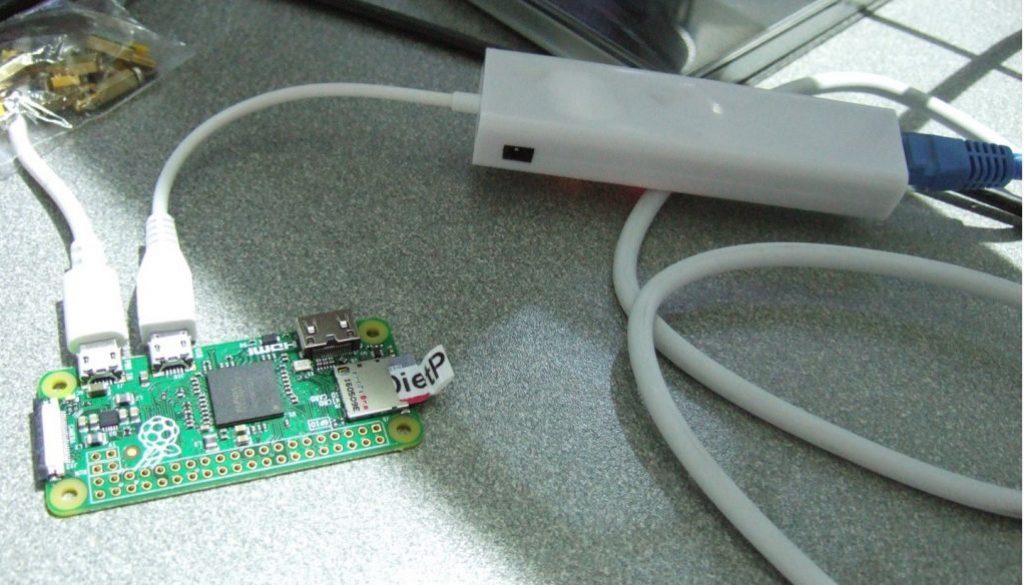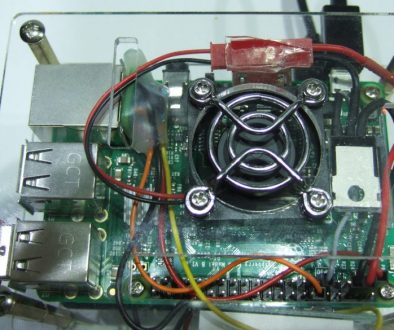Diet Pi Supporting Material (videos #126 and #128)
In videos #126 and #128 I introduced a SD card image file based on dietPi and a script from Peter Scargill. Here, you find some material and links for this topic:
How to get Peter’s script:
wget https://bitbucket.org/api/2.0/snippets/scargill/94yxL/99a359e843f0997c6b9247f36ba4848d5b322f5e/files/snippet.txt
SD card image:
http://www.sensorsiot.org/transferFiles/Pi_Zero_MQTT_Broker/DietPi_MQTT_Broker_8G_New.zip
If you use the SD card image, the following users and passwords are used:
For the operating system:
root / dietpi
pi / password
For Node Red:
for the Flows page: admin / admin
for the dashboard: user / user
You can change the usernames/password with this script:
wget http://www.sensorsiot.org/transferFiles/Pi_Zero_MQTT_Broker/nodeRedUserReset.sh
Change the passwords in the script
nano nodeRedUserReset username="user" userpass="user" adminname="admin" adminpass="admin"
and run the script:
bash nodeRedUserReset.sh
Flow file for video #128
http://www.sensorsiot.org/transferFiles/Pi_Zero_MQTT_Broker/Flow%20enhanced.txt




16. April 2017 @ 9:16
link to Peter’s script is wrong, or, better, could point to an older version… this one points always to latest version:
https://bitbucket.org/api/2.0/snippets/scargill/oAkRK/master/files/snippet.txt
18. April 2017 @ 21:32
I’ve downloaded your disc image and used a version of the dietpi.txt that I’ve successfully used for another Zero W installation. However, I’m trying to go headless right from the start and when I boot the disk image the wireless router doesn’t see the Zero W node. And of course I therefore can’t ssh to the node.
Any ideas of what I could try with the dietpi.txt file or something else to get started?
Thanks!
26. July 2017 @ 15:44
My solution was to open the #/etc/network/interfaces file with sublime text (Mac) and change some lines on the wlan0 as detailed here: http://dietpi.com/phpbb/viewtopic.php?f=11&t=1577&start=20
# Wifi
allow-hotplug wlan0
iface wlan0 inet static
address 192.168.1.130
netmask 255.255.255.0
gateway 192.168.1.1
wireless-essid SSID
wireless-key SSID_PASS
wireless-mode Managed
wireless-power off
wpa-ssid SSID
wpa-psk SSID_PASS
#dns-nameservers 8.8.8.8 8.8.4.4
Basically, you set the SSID and SSID_PASS to your own values, save the file, and pop the sd card to the Pi zero w and it will work.
3. May 2017 @ 7:01
Hi Andreas,
unfortunately your Link http://www.sensorsiot.org/transferFiles/Pi_Zero_MQTT_Broker/nodeRedUserReset is dead. It would be nice, if you could provide the script again 🙂
Thanks for your great work!
Vielen Dank für deine tolle Arbeit! Ich freue mich auf weitere super Videos und Tutorials von dir! 🙂
Schöne Grüße aus Deutschland!
Felix
6. May 2017 @ 6:09
Thanks for the feedback. I added .sh and it seems to work now (don’t ask me, why)
6. May 2017 @ 12:20
Hi! made a bootable sd card of the image and after booting it showing the ip 192.168.0.202 and username and password.
but i cant do enything. wireless mouse / keyboard doesn’t work. tried a usb cable keyboard and the pi zero w shut down. so cant configure anything to be able to ssh in to it.
any idea? thanks.
6. May 2017 @ 13:06
I aa a Linux beginner, so I cannot help. But many viewers reported, that everything worked, and I also used the image for 3 or 4 devices.
If you connect via Wi-Fi, you have to first log-in using a normal USB keyboard and enter the Wi-Fi credentials. I use a normal Logitech keyboard with the unifying dongle.
21. May 2017 @ 9:47
Hello Andreas,
First of all thank you for this topic and files, it works great and everything is fine.
Now that I have everything working I wanted to use the nodeRed user rest script.
After changing the user and admin names an passwords I saved the file and executed the script but I seem to get following error, any idea’s?
root@DietPi:~# bash nodeRedUserReset.sh
nodeRedUserReset.sh: line 2: $’\r’: command not found
nodeRedUserReset.sh: line 7: $’\r’: command not found
: No such file or directory: cd: /home/pi/.node-red/
rm: cannot remove ‘settings.js\r’: No such file or directory
nodered: unrecognized service
waiting…
waiting…
waiting…
^Z
[1]+ Stopped bash nodeRedUserReset.sh
The directory “cd: /home/pi/.node-red/” is definitely there but the errors in lines 2 and 7 are a mystery.
Any help would be greatly appreciated.
Kind regards,
Edwin
21. May 2017 @ 9:52
It seems this Reply window doesn’t like copy/paste 😉
root@DietPi:~# sudo nano nodeRedUserReset.sh
root@DietPi:~# bash nodeRedUserReset
bash: nodeRedUserReset: No such file or directory
root@DietPi:~# bash nodeRedUserReset.sh
nodeRedUserReset.sh: line 2: $’\r’: command not found
nodeRedUserReset.sh: line 7: $’\r’: command not found
: No such file or directory: cd: /home/pi/.node-red/
rm: cannot remove ‘settings.js\r’: No such file or directory
nodered: unrecognized service
waiting…
waiting…
waiting…
^Z
[1]+ Stopped bash nodeRedUserReset.sh
Hopefully it displays correctly now.
21. May 2017 @ 16:39
Hi Edwin
now it should work. It was my mistake. The file was not in UNIX format…
please remove your current file on your Raspi and wget it again.
Regards
Andreas
22. May 2017 @ 11:08
Problem solved,
Thank you.
Regards
26. May 2017 @ 23:48
Does anybody know if this image is supposed to work on Orange Pi Zero?
What I see is that device powers up, but the is no activity – ethernet link is down and it’s yellow/green leds are always on.
At the same time when I flash clean DietPi image, Zero boots just fine.
23. June 2017 @ 10:17
The image does not work on the Orange Pi. Use a clean image and the script. This should work
#128 Node-Red Tricks for Home Automation (JS, Audio, SQlite, Alexa, Mosquitto MQTT etc.) – Loon Tube
3. June 2017 @ 20:01
[…] Diet Pi Supporting Material (videos #126 and #128) […]
22. June 2017 @ 12:29
What is the user name and password for “Node Red UI Desktop”?
23. June 2017 @ 10:13
user/user or admin/admin
13. October 2017 @ 14:15
Does this image only work on the Pi-Zero – or will it also work on a Pi-3?
22. October 2017 @ 12:01
The image works only on the Pi zero. The script, however on all RPis
22. October 2017 @ 11:15
I am new to all of this and am unable to get my wifi up and running.
In my efforts to resolve this I believe I see an error in the boot/dietpi/func/dietpi-set_hardware file.
Is line 1330 missing a single quote after the off?
ExecStart=/bin/bash -c ‘sleep 20;iwconfig wlan$(sed -n 2p /DietPi/dietpi/.network) power off
I think is meant to be:
ExecStart=/bin/bash -c ‘sleep 20;iwconfig wlan$(sed -n 2p /DietPi/dietpi/.network) power off’
11. November 2017 @ 7:11
I do not exactly know to which script you refer. If you refer to Peter’s script, you better address your question in his blog, because I am only a user of this script.
6. November 2017 @ 19:48
Hi Andreas, I set up a Pi Zero W with your SD image. The only change I made was the IP address, since my network is on 192.168.1.xxx – the Pi is on 192.168.1.90. The web site works, and Node.Red works, but I couldn’t get the MQTT nodes to work: when I click the Test button, Node.Red says “Successfully injected Test”, but the mqtt nodes just say “connecting”. I eventually tried mqtt from the command line, and for any command (e.g. mosquitto_sub -t “#”) I’m getting Error: Connection refused. Could this be because of the IP address? Or have I done something else wrong? I’m new to mqtt, so I could be doing something stupid.
Where can I find log files or something to help me debug mqtt? I’m going thru the mosquitto.org site now, trying to figure it out.
11. November 2017 @ 7:00
Mosquitto has the standard user and password admin/admin. So, you have to enter these two if you publish messages. If you do not want this behavior, you can google how to disable security.
6. November 2017 @ 20:01
As usual, after struggling for hours and then finally asking for help, I stumbled across the solution, sort of: I was following a tutorial which said I should enter “mosquitto -v” to get the version. As soon as I did this, the messages came thru and it shows as connected in Node.Red. So the problem is that mosquitto isn’t running! I don’t know how I missed that. Can I configure it to start mosquitto automatically each time the Pi boots?
11. November 2017 @ 6:58
Mosquitto -v is used for debugging.
I always use the Script from Peter Scargill to setup node-red and mqtt. There it is done automatically. So I do not know how to do it.
10. November 2017 @ 16:12
what command do i run to get the node-red server to start on boot? right now i have to start it manually same with the mqtt broker.
11. November 2017 @ 6:48
I always use the Script from Peter Scargill to setup node-red and mqtt. So I do not know how to do it.
15. January 2018 @ 17:42
Hi,
Does the 8gb image work with both the Raspberry Pi zero and the Raspberry Pi zero W or is it only for the Raspberry PI zero W?
Thanks
21. January 2018 @ 0:35
If I remember right, it should work for both
11. May 2020 @ 16:32
Es Corona grüezi
I tried to install it but the image seems to be quite old.
Also the links don’t work anymore for Peter’s script.
Do you have by any chance an updated version of this ?
Thanks
David
3. June 2020 @ 19:33
Unfortunately I cannot keep my stuu up-to-date. A google search with “Scargill script” will lead you to the script